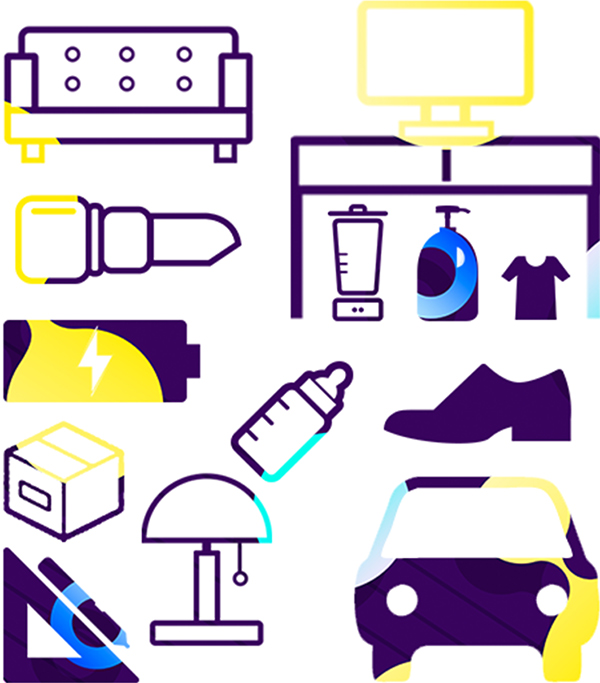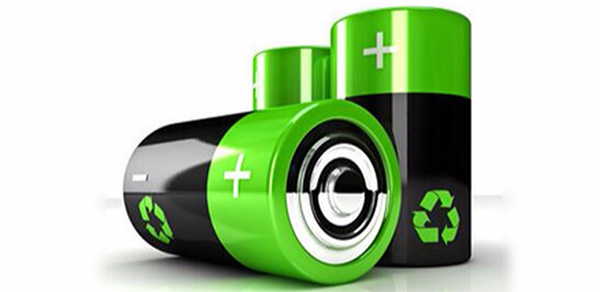The current trend of green environmental protection in the society has become more and more fierce. With the successive introduction of green environmental protection laws and regulations of various countries, this trend has actually turned from an environmental protection concept into a technical barrier to the export trade of enterprises. Especially for high-contamination light industrial enterprises such as electronic and electrical appliance manufacturers, toys, textiles and leather, understanding these laws and regulations is the first step to breaking down barriers and achieving success in the international market.
1. High-risk substances may be present in below consumer products.

2. Common chemical testing projects
2.1. Halogen and specific halogenated organics
Not only it is self-toxic, but once it is burned, it will cause secondary pollution such as dioxins.
2.2. Phthalates
Affects hormone secretion and reproductive organ development, affecting the normal development of the fetus or child.
2.3. PAHs
It has strong carcinogenicity and may also be teratogenic and genetically mutated.
2.4. DMF
After contact with the human body, it will penetrate into the skin, causing allergies, pain, dermatitis, erythema, and even breathing difficulties.
2.5. VOC
VOC can cause severe convulsions, coma, and damage to the liver, kidneys, brain and nervous system, causing serious consequences such as memory loss.
2.6. Other High Risk substances
Restricted substances such as REACH regulations and ROHS directives.
REACH regulations
Name: 1907/2006/EC, Registration, Evaluation, Authorization and Restriction of Chemicals
Scope: almost all products (except food, medicine, pesticides) sold to the EU
Regulation: When any SVHC (Substances of Very High Concern) content is >0.1% and the total amount of the substance entering the EU is >1 ton, the importer is required to perform the obligations of registration, notification, authorization, etc.
We can conduct targeted tests on high-risk components to confirm that they contain substances of high concern or restricted substances below the concentration limit, and promptly notify customers of the ever-changing SVHC list changes.
ROHS Directive
Name: 2011/65/EU Directive on Restriction of the Use of Certain Hazardous Substances in Electrical and Electronic Equipment
Regulation: The ROHS Directive is part of the CE certification and specifies the use of 10 restricted substances in the production of electrical and electronic equipment.
Restricted substances: DEHP, BBP, DBP, DIBP, Pb, Cd, Hg, hexavalent chromium (Cr6+), PBBs and PBDEs
We can provide professional and comprehensive ROHS testing services and other product compliance technical guidance, and timely inform customers of the update of ROHS 2.0.
WEEE Directive
Name: 2012/19/EU Directive on Waste Electrical and Electronic Equipment
Regulation: After the WEEE Directive retires electronic products, the producer's responsibilities are required, such as providing margin and related product information to the recycling center, and registering and regularly reporting the number of listings and recycling rate in the local country where the product is listed. If the producer fails to take responsibility for the requirements of the corresponding member states, its products cannot enter the country's market.
We can help companies to provide product recycling information, evaluate product recycling performance and issue corresponding recycling reports; WEEE trash can recycling labels can be verified and reported in accordance with the requirements of standard EN50419.
Battery directive
Name: 2006/66/EC Directive on Batteries and Accumulators
Regulations: stipulates the responsibility of the battery manufacturer, the details of the recycling of the battery, the recovery rate, the marking pattern specification, and the requirements for the content of lead, cadmium and mercury. The revised Directive 2013/56/EC, published in 2013, removes the cadmium exemption for batteries in wireless power tools and prohibits mercury in button batteries.
Restricted substances: lead, cadmium, mercury, etc.
We can provide the testing services for battery-restricted substances in various countries including the European Union, and check whether the battery labels are standardized according to the instructions.
The relationship between battery instructions and ROHS,WEEE
In terms of material limitations, restrictions on heavy metals for electronic equipment on ROHS Directive, such as mercury and cadmium, and they are not for batteries. On recycling, the WEEE command is higher than the battery command. Under the premise that the WEEE directive has no special requirements for batteries and accumulators in electronic appliances, they are following the battery directive.
